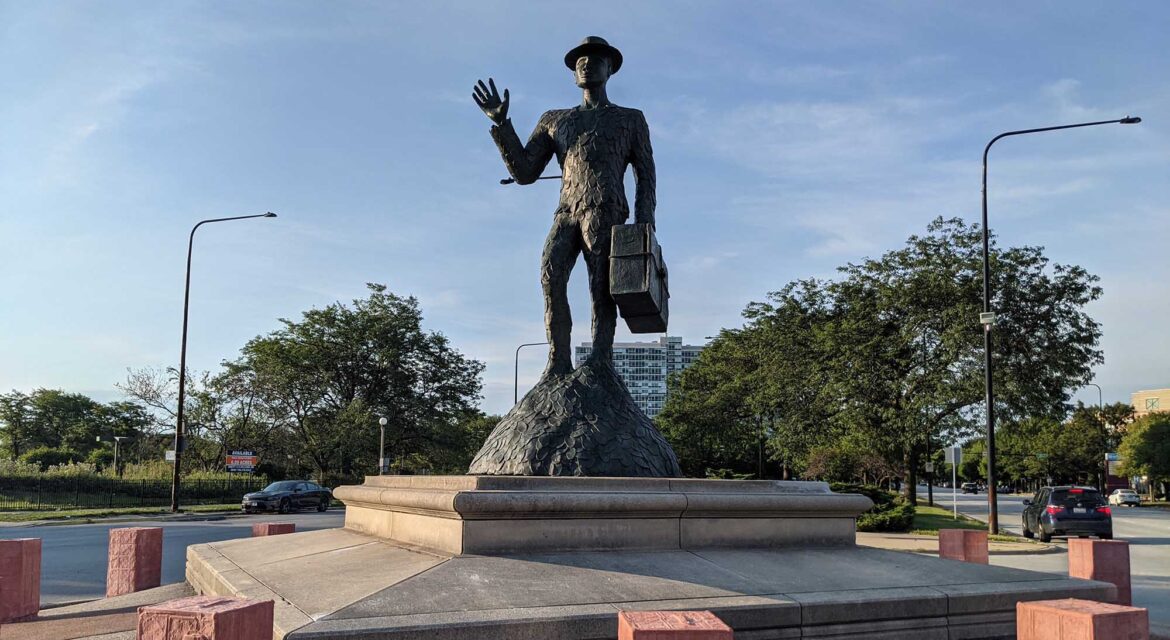 Designed to be a testament to the thousands of African Americans who migrated to Chicago in the early 20th century in search of greater freedom and opportunity, Alison Saar’s Monument to the Great Northern Migration is equal parts celebration and commemoration. Oriented to the north to symbolize the traveler’s destination, the piece is connected to the Bronzeville community on multiple levels.
Designed to be a testament to the thousands of African Americans who migrated to Chicago in the early 20th century in search of greater freedom and opportunity, Alison Saar’s Monument to the Great Northern Migration is equal parts celebration and commemoration. Oriented to the north to symbolize the traveler’s destination, the piece is connected to the Bronzeville community on multiple levels.
Dedicated in 1996, the Monument to the Great Northern Migration commemorates the exodus of African-Americans to Chicago to liberate themselves from the oppression of the Jim Crow South. Residing in the Bronzeville, which is a center of African-American life and culture in Chicago, it symbolizes the reconstitution of the black identity.
The piece also contains symbols and imagery that are easy to spot. The bollards surrounding the monument take the form of suitcases textured with patterns derived from the tin ceilings of the early 20th century. Additionally, the figure is wearing a suit made of shoe soles that are full of holes, further signifying the difficult journey from the south to the north of Africa-American men and women who migrated to Chicago after the Civil War. The figure stands upon a mound made of these same worn shoe soles.

 Those symbols are connected to the history of Bronzeville, which was a predominantly African American community during this time period. It became home to many of more than 6 million African-Americans moved out of the South between 1915 and 1970, enabling it to become home to a diverse business community.
Those symbols are connected to the history of Bronzeville, which was a predominantly African American community during this time period. It became home to many of more than 6 million African-Americans moved out of the South between 1915 and 1970, enabling it to become home to a diverse business community.
Alison Saar connected this history to the present of the community, relying on her ability to reflect themes of cultural and social identity, history, and religion in her work. Her figures and objects have become powerful landmarks that are designed to investigate issues of gender, race, heritage, and history.
An important means of identity and connection for the Bronzeville neighborhood, the Monument to the Great Migration has become recognized for the symbolic and physical distinction that it has cultivated for residents and visitors. It has enabled connections to the past for audiences in the present that will continue to positively impact the people and community of Bronzeville.

